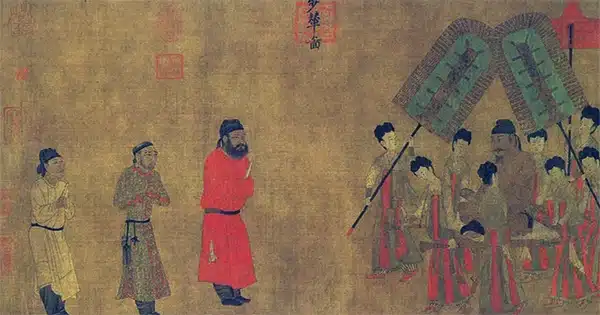When examining social mobility in modern developed nations, academics usually use data from the General Social Survey (in the US) or the World Economic Forum. However, the challenge of studying the same events from earlier eras is more difficult because pertinent statistics are more elusive.
But now, using the Tang Dynasty tomb epitaphs, a social science research team has found a means to analyze professional growth in medieval China (618–907 CE). These epitaphs include the names and titles of the deceased’s father and grandfather, including the Minister of Personnel, Minister of the Court of Judicial Review, and Palace Deputy Imperial Censor, as well as the deceased’s professional background and educational qualifications. These details provide a wealth of information for assessing social mobility across generations.
Interestingly, their data demonstrates that social mobility during this time was accelerated by schooling.
According to Fangqi Wen, an assistant professor of sociology at Ohio State University, “epitaphs written in medieval China, including the Tang Dynasty, tend to be highly detailed descriptions of an individual’s life with stylized prose and poems, and they contain granular information about the ancestral origins, family background, and career history of each deceased individual,”
Erik H. Wang is an assistant professor in NYU’s Department of Politics. “This information, to some extent, mirrors what would have been included in a contemporary social mobility survey,” Wang continues.
Wang investigates political economics throughout history, and Wen looks at social mobility in modern societies. They realized that the artifacts served as a medium for the fusion of their scholarly interests after realizing the high caliber of data included in these epitaphs. Subsequently, they brought on board Michael Hout, a renowned expert on social stratification and mobility and sociology professor at NYU, who served as Wen’s dissertation advisor.
Their findings, which are published in the Proceedings of the National Academy of Sciences (PNAS), demonstrate how socioeconomic origins, education, and adult achievement relate to one another in ways that are relatively similar to those observed in the 1960s and 1970s in the United States. The researchers’ analysis, which included information from 3,640 male epitaphs and other trustworthy historical sources like dynastic documents and independently constructed genealogies, showed that meritocracy had emerged in China 1,300 years before the demise of the country’s medieval aristocracy.
The researchers identified a particular factor that contributed to this development: the deceased’s performance on the Keju, or Imperial Exam, which was created at this time to choose officials for positions in the civil service. They discovered that the Keju, which was implemented up until the early 20th century, promoted social mobility in a similar way to how higher education has done so in the United States since the 1960s at the latest.
“Our statistical analysis shows that coming from a prominent ancient great house or ‘branch’ mattered less for career success in the bureaucratic system after roughly 650 CE while passing the Keju came to matter more,” the researchers write. “Furthermore, passing the competitive exam may have even equalized chances of subsequent success, as a father’s status was not a factor in the bureaucratic rank of men who passed the Keju.”
“Education is central to our understanding of intergenerational mobility,” says Hout. Many believe it was a development of the 20th century. However, data spanning centuries reveals certain occurrences that closely resemble modern patterns when it comes to the relationships between origin, education, and careers.”
















